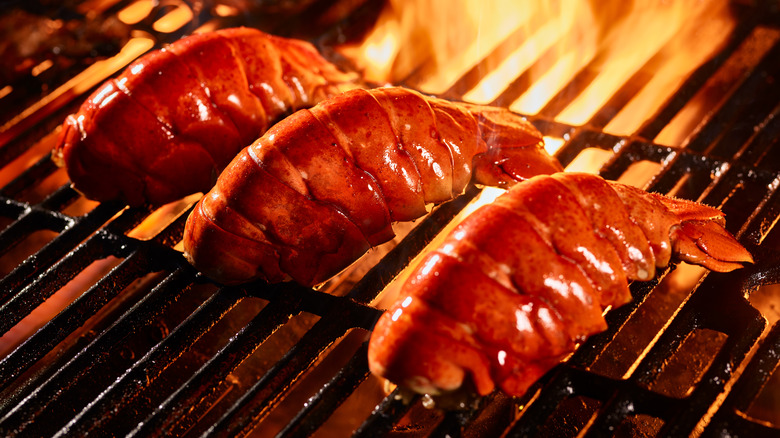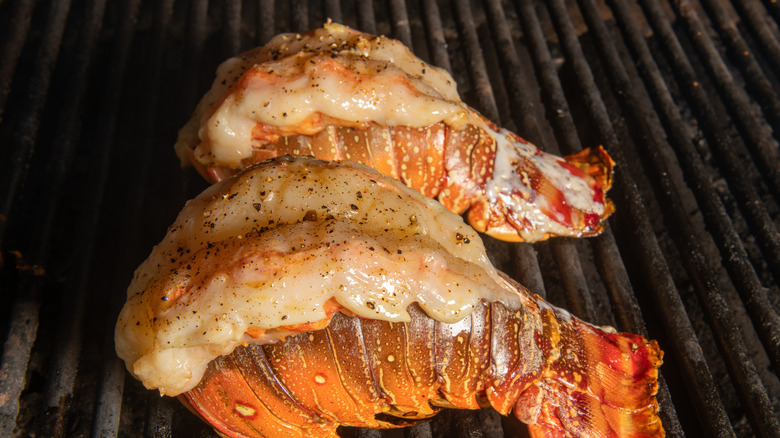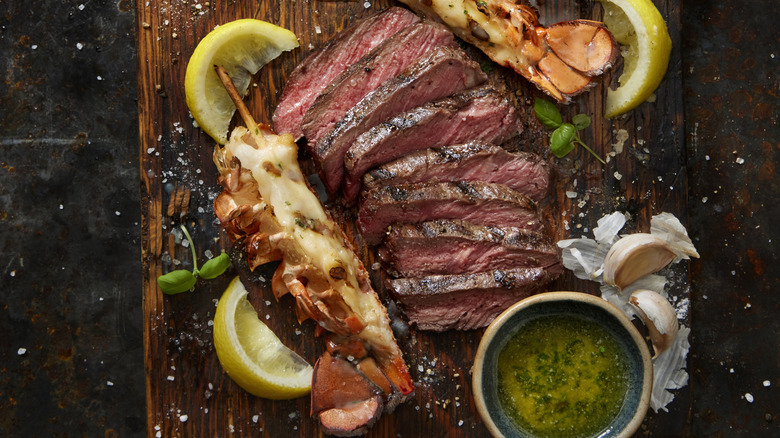Grill Lobster Tails For Unbeatable Flavor
Breaking out the grill means that humble but delicious dishes like juicy burgers, charred corn on the cob, and colorful kebabs are back on the menu. But your grill can also be used to make a decidedly more luxurious dish — lobster. Although you may have been lucky enough to enjoy lobster steamed, baked, broiled, or poached in the past, grilling is a much simpler (and arguably more flavorful) cooking method.
If the thought of dropping a live lobster into a boiling pot of water is enough to make you squirm, you're not alone. Lobsters can be an intimidating protein for most home cooks. That's the first benefit of this recipe — using lobster tails makes cleaning, preparing, and cooking a lot less intimidating. Plus, grilling offers more opportunities to infuse flavor into the lobster meat, including a kiss of smoky flavor from the grill and an added boost from butter basting and seasoning.
Preparing lobster for the grill with the butterfly method
Grilling the perfect lobster starts with selecting the right one at the grocery store. Although there are numerous species of lobster, the types you'll see most often in the U.S. are the Maine variety, which is famous for its sweetness, and the spiny variety, which is more reminiscent of crawfish in flavor. Although opinions about which is superior are about as mixed as Maine versus Connecticut-style lobster rolls, we'll say it –– they're both tasty when grilled. You can find lobster live, frozen, or in pre-cut tail portions (we'd recommend the latter).
Once you've acquired your preferred lobster tails, ensure they are thawed and have their digestive tract (a dark line running down the center of the tail) removed. There are several ways to prepare the lobster for grilling, including throwing it on whole or cutting it in half and skewering to prevent the meat from curling, but the butterfly method is the most eye-catching. To try it, use a pair of kitchen scissors to cut the top side of the shell down the middle. Then, using your hands, carefully open the shell and pull out the meat, laying it on top of the shell in one succulent piece.
Grilling perfect lobster is easier than you'd think
After completing your lobster surgery, it's time to grill. Start by preheating your grill to medium heat (about 400 degrees Fahrenheit). It's also smart to use indirect heat here, meaning that flames are licking the grates on only one side of the grill, and the lobster meat cooks through indirect heating on top of its shell over on the other side.
While the lobster is cooking, you can add more flavor by sprinkling it with seasoning, basting it with garlic butter, and charring lemons on the hot grill grates. You'll notice the shell becoming more vibrant and the meat getting opaque as it reaches doneness. Keep a close eye on it to prevent overcooking, lest you end up with rubbery lobster. The ideal internal temperature is 140 degrees Fahrenheit.
If you can stand waiting, let the lobster rest for a couple of minutes before serving. This grilled dish is excellent on its own with a spritz of lemon juice and melted butter, but it can also be part of a colorful, seasonal meal. Add a lobster tail to grilled steak for summer surf and turf, serve it as part of a seafood feast with grilled shrimp skewers and fish, or go classic with a perfectly baked potato with crispy skin and a side of butter-boiled corn. No matter how you serve it, this lobster will be a hit.


